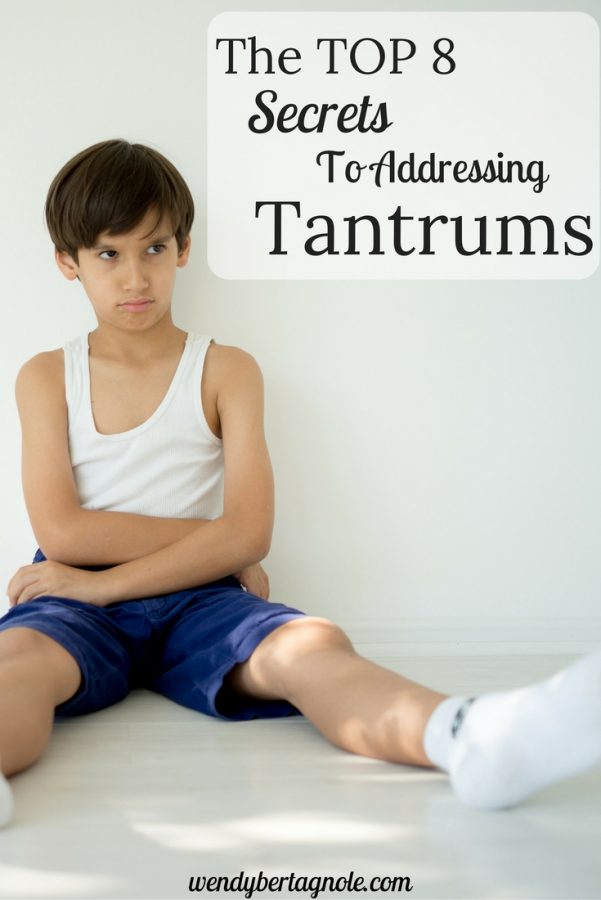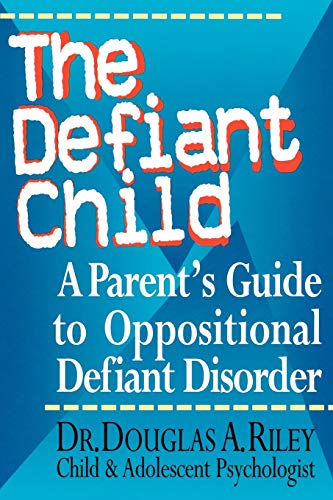My Top 8 Secrets to Addressing Tantrums
Tantrums. Just the word alone is enough to stress me out, get my heart rate racing, and turn me into a crazy mom.
Seriously. I hate dealing with screaming and whining!
I feel like in those moments everything is out of control, and I need to fix it.
For the longest time I would either feel patient and loving and try to come in and rescue them from the the problem (to end the incessant screaming) or send them away to work it out on their own (to distance myself from the incessant screaming and pretend like it wasn’t happening).
None of that really felt right, though.
Essentially, what I was doing was NOT dealing with tantrums, pretending they weren’t happening, or acting as though they weren’t a problem in my life, which was SO far from the truth.
Be sure to check out even more of my helpful parenting tips, too!

My Top 8 Secrets to Addressing Tantrums
I’ve since realized that we all have tantrums.
So, while I am a fan of decreasing tantrums, we still need to know how to address them when they DO happen.
I happen to have a bit of experience in this realm- personally and professionally – so I’ll share my top secrets to addressing these outstanding tantrums!
It wasn’t until I read the book “Boundaries” (affiliate) when I realized that in those two scenarios I was either rescuing my child from his/her problem, or sending them to their room to suppress the feelings around the problem.
No More Meltdowns: Positive Strategies for Managing and Preventing Out-Of-Control Behavior Parenting a Child Who Has Intense Emotions: Dialectical Behavior Therapy Skills to Help Your Child Regulate Emotional Outbursts and Aggressive Behaviors
Parenting a Child Who Has Intense Emotions: Dialectical Behavior Therapy Skills to Help Your Child Regulate Emotional Outbursts and Aggressive Behaviors Your Defiant Child: Eight Steps to Better Behavior
Your Defiant Child: Eight Steps to Better Behavior The Highly Sensitive Child: Helping Our Children Thrive When The World Overwhelms Them
The Highly Sensitive Child: Helping Our Children Thrive When The World Overwhelms Them
Neither way actually involved me helping my child solve the problem causing the tantrum in the first place, which meant the real problem was always there, waiting to resurface at another time, causing me to go crazy once again, and repeat the situation over and over again.
Why Such Crazy Tantrums?
If you have a child with sensory differences (as I do) you might have wondered why sensory tantrums are so much more explosive, longer, and crazier than most any other tantrum on the planet. (OK, maybe that is a slight exaggeration, but seriously! They’re huge!)
If so, you’re not alone.
To really understand the tantrums, we have to first look at the root of why they happen.
A sensory tantrum happens when the sensory system is disregulated, which then causes other functions of the to function properly.
Jean Ayers, the leading researcher on Sensory Processing found the following things to be hindered when sensory needs are not met:
- ability to concentrate
- speech
- emotional stability
- self control
- self esteem
- reasoning
- attention span
Because those things are hindered when the body’s sensory needs are not met, the first thing to address when behavior happens, is the sensory portion.
Until those sensory needs are met, the brain simply won’t function as well.
Logic, reasoning, problem solving abilities, etc. are all hindered when a child is having a severe tantrum.
Once a body is in sensory dysregulation it tends to go into fight or flight mode as a form of protection.
This is why a child will resort to fighting against anyone or anything so quickly when sensory needs are not met.
The Explosive Child The Kazdin Method for Parenting the Defiant Child
The Kazdin Method for Parenting the Defiant Child The Survival Guide for Kids With Behavior Challenges: How to Make Good Choices and Stay Out of Trouble
The Survival Guide for Kids With Behavior Challenges: How to Make Good Choices and Stay Out of Trouble The Defiant Child: A Parent’s Guide to Oppositional Defiant Disorder
The Defiant Child: A Parent’s Guide to Oppositional Defiant Disorder
So, when parents try to tell a kid to stop screaming, ask them why they hit Johnny, or do anything to intervene in the moment, it is met with intense resistance because the child’s body has not had the time to come out of fight or flight mode.
So What Do You Do?

Well, as we all know, it really isn’t productive to just allow a child to behave however they want, ignore tantrums, or just give in to keep the tantrum from getting bigger.
Those are the sure fire ways to make tantrums happen again and again and again.
From multiple different parenting books, I’ve come up with my own strategy to addressing tantrums effectively in my home.
During a Meltdown
Not every meltdown will be avoided.
So, we need to have a plan for when a meltdown happens.
When the child is in meltdown mode the following strategy is what I like to use.
1. approach with empathy “I see you are upset” or “I see your body is not liking this”
2. determine if your child wants some time alone or if he/she wants to be in your presence
3. provide proprioceptive input or a calm down spot if possible
4. listen to your child and verbally validate his her feelings “I hear you say you want the car keys”
When The Child begins to Calm Down
Now that you know the reason behind the tantrum and you can see/hear your child starting to calm down, it’s a great time to approach a cooperative solution together.
It is important in this phase to ask open ended questions, validate feelings, and provide empathy for the difficulty of it all.
5. state the boundary/expectation “kids can’t take car keys alone, it isn’t safe, it is against the law.”
6. ask questions about how to solve the problem “is there a way you can go to the car without carrying the car keys yourself?”
7. allow the child to come up with ideas to solve the problem
Positive Discipline: The First Three Years, Revised and Updated Edition: From Infant to Toddler–Laying the Foundation for Raising a Capable, Confident How to Talk So Kids Will Listen & Listen So Kids Will Talk
How to Talk So Kids Will Listen & Listen So Kids Will Talk The Happiest Toddler on the Block: How to Eliminate Tantrums and Raise a Patient, Respectful, and Cooperative One- to Four-Year-Old
The Happiest Toddler on the Block: How to Eliminate Tantrums and Raise a Patient, Respectful, and Cooperative One- to Four-Year-Old Positive Discipline: The Classic Guide to Helping Children Develop Self-Discipline, Responsibility, Cooperation, and Problem-Solving Skills
Positive Discipline: The Classic Guide to Helping Children Develop Self-Discipline, Responsibility, Cooperation, and Problem-Solving Skills
8. ask the child to repeat the rule to you and the solution to his problem once it is solved “what is the rule with car keys?” “what is it you will do when you want to go to daddy’s car next time?”
Not all tantrums can be avoided, they are inevitable at some point or another, heck even I have a tantrum every now and then! I’m done fighting them, punishing them, and banishing my children because of them.
I have found so much power in facing them with my children as we go through those hard moments together, talking about our feelings, expressing tough things, and mostly just being angry together.
It is my hope that through this process, my kids are learning the skill of coming to me IN their problems rather than trying to ignore them, fight them, or suppress them.
I imagine the connections we are forming together, the problems we are learning to solve together, will make for a little less frightening teenage years for all of us.
So, when my kids start heading towards a tantrum, I mentally go through this list of secrets to help us all get through it in a way that keeps us connected, supports sensory needs, and still allows me to feel like I don’t have to give in to their every cry.
I can hold my ground as a parent, teach them how to solve problems, and be there for them through any tantrum that comes along.
While they are never fun, with these secrets, I know we will get through it together and come out of it stronger than before.
That is what matters most to me.
To learn more about supporting your child’s emotional needs:
No More Meltdowns: Positive Strategies for Managing and Preventing Out-Of-Control Behavior Parenting a Child Who Has Intense Emotions: Dialectical Behavior Therapy Skills to Help Your Child Regulate Emotional Outbursts and Aggressive Behaviors
Parenting a Child Who Has Intense Emotions: Dialectical Behavior Therapy Skills to Help Your Child Regulate Emotional Outbursts and Aggressive Behaviors Your Defiant Child: Eight Steps to Better Behavior
Your Defiant Child: Eight Steps to Better Behavior The Highly Sensitive Child: Helping Our Children Thrive When The World Overwhelms Them
The Highly Sensitive Child: Helping Our Children Thrive When The World Overwhelms Them
About the Guest Author
This post originally appeared on WendyBertagnole.com and is reprinted with permission.
With an undergraduate degree in child development, and a master’s degree in special education, this foundation was a springboard for Wendy in helping kids and families to see the root of any challenges they face.












